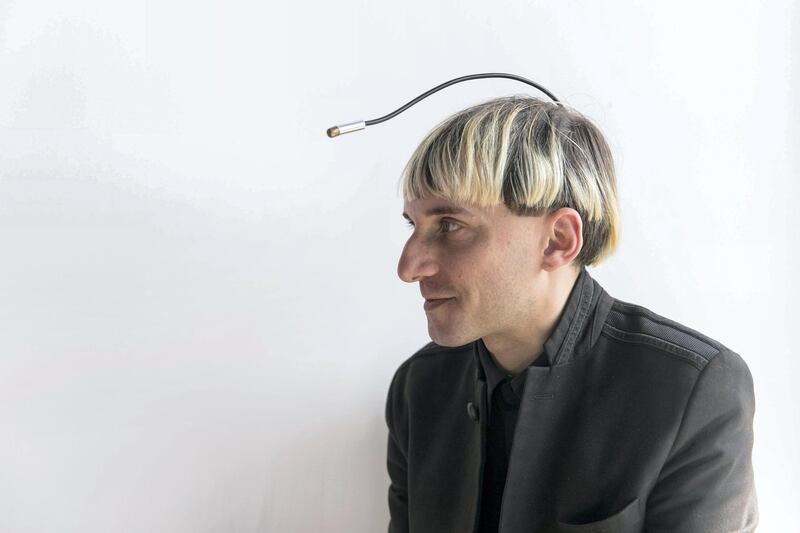Having an antenna permanently drilling into your skull can sometimes be a real pain in the head, the world’s first and so far only cyborg admits.
Since 2004, Neil Harbisson has lived with a flexible metal rod dangling over his forehead. Colourblind, he uses sensors in the antenna to enable his brain to experience colours.
“Sometimes I have antenna aches in same way someone might have a toothache or a headache,” he revealed. "But there's no tablets for antenna aches yet ,so I just take a headache tablet.”
Mr Harbisson, 33, is attending the World Government Summit in Dubai as a participant at the Edge of Government pavilion, which explores cutting edge technologies, being developed around the world, in his case literally.
Born in Catalonia, Spain, he is now a citizen of the UK and co-founder of the Cyborg Foundation which defends the rights of cyborgs.
His antenna is permanently wired into his head, although it has been upgraded over the years and now connects him to the internet via Bluetooth.
“If I connect to Nasa's International Space Station I can then receive colours from space or many people directly to my head,” he said.
He has never seen his colour blindness, a rare version which means he only sees in black and white, as an impairment, saying “I see this as a condition or a peculiarity.
“There are any advantages of seeing in greyscale that people seeing in colour don’t have. That's why I never wanted to change. I didn’t want to see colour - I want to feel colour.
“Greyscale vision gives me greater night vision for example, and I can see longer distances. I can memorise shapes more easily, because colour doesn’t distract me.
Each colour frequency produces a distinct vibration inside his head. He can detect light frequencies from infrareds to ultraviolets, so well beyond the normal capacity of a human.
_______________
Read more:
‘Cyborg artist’ to translate colours of Dubai into music
Global 3-D artists in Dubai to test your perceptions
Cyborg artist hears colour to make music
_______________
Life as a cyborg “Creates all sorts of reactions, from good to bad,” he says. “Some people think this is unnatural or dangerous. Some people see it as something against humans or against God.
“That’s the negative reaction. Other people think it's the natural evolution of our species, now we are merging with technology psychologically, and the next stage is we will merge biologically.”
He admits that airport security is sometimes literally a major headache. “It depends on the airport, depends on the person who is on security.
“Sometimes they react very negatively. They don’t understand how I cannot remove it and it takes a long time to get through.”
In general though “I always have something to talk about. It’s a good way of starting conversations. Since 2004 I’ve spoken to strangers every day.
Mr Harbisson plans to undergo another modification later this year. “It’s a new organ for the sense of time. It will be implanted between the skin and the skull, and it will be circular and give me point of heat that will take 24 hours to do the complete circle, so I will feel the rotation of the Earth around my head.”







